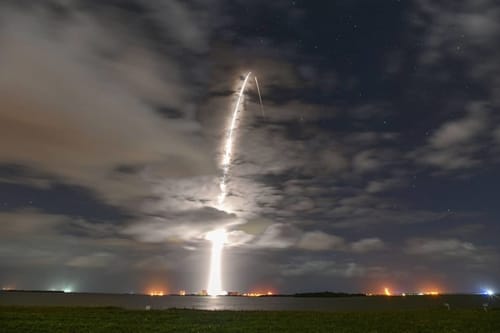 |
| Starlink is about to complete the first phase |
SpaceX announced that it will continue testing its Starlink satellite internet service over the next year, indicating that commercial services are unlikely to roll out in 2020 as originally planned.
Since 2019, pioneering space company (Elon Musk) has launched nearly 900 satellites for the Starlink Project to provide high-speed internet access to rural areas around the world.
Musk said the Starlink service would be a major source of funding for his larger projects, such as developing the Starship rocket to take clients to the moon and attempting to colonize Mars.
SpaceX engineer (Kate Tice) said before the start of the 16th group of satellites: We hope to expand the beta version very convincingly early next year (i.e. late January or late February). .
The number of orbiting satellites increased to 955, which means that SpaceX is close to completing the first phase of the 1,440 Starlink constellation.
These satellites orbit the Earth at an altitude of 550 km. SpaceX's goal is to close global coverage by next year. The satellites of the second stage will operate in orbits of more than 1000 km.
In October, SpaceX invited hundreds of people from rural and remote northern states to participate in the "Boring and Boring" beta.
This opens the door for those who sign up to purchase the company's $ 499 kit and pay $ 99 per month for internet service.
In documents submitted to the US Federal Communications Commission, the company had initially hoped to provide commercial services before the end of 2020 and rapidly expanded to include nearly all of the world's population by 2021.
In November, SpaceX received approval from Canadian authorities to start experimental Starlink testing in Canada, allowing for a fairly public beta release in southern Canada.
The most recent beta test shows that the service offers data speeds of 50 to 150 Mbps and latency of 20 to 40 ms.
With the increase in the number of satellites, the company said, more ground stations will be installed and network software improved, which could reduce latency.
"We plan to achieve a time frame of 16-19 milliseconds by summer 2021," said Deiss.
